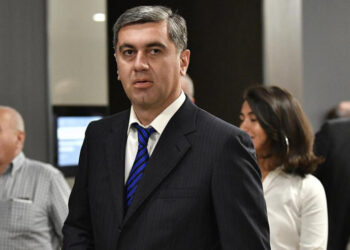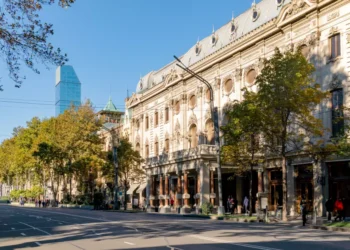On June 5, at 10 am, on World Environment Day, in Krtsanisi Forest Park, the Austrian Embassy, the Austrian Development Cooperation, the National Wildlife Agency and CENN will open an exhibition of famous Austrian artist and environmentalist Friedensreich Hundertwasser.
The open-air exhibition, which will be held in the wild near Tbilisi, marks both World Environment Day and the long-standing partnership between Austria and Georgia. Special attention is being paid to Austria’s support for environmental issues and sustainable use of resources in Georgia. The curator of the exhibition is Mariam Shergelashvili, the curator of the Independent and Silk Museum and co-founder of the initiative group ALGORITHM F5.
The exhibition will be opened and attended by the Minister of Environment and Agriculture, Levan Davitashvili, the Mayor of Tbilisi, Kakha Kaladze (tbc); Ambassador of Austria to Georgia, Thomas Mühlmann; Head of the Tbilisi Office of the Austrian Development Agency, Alexander Carner, and the Executive Director of CENN, Nana Janashia.
The hosting of the exhibition in Krtsanisi Forest Park is not accidental. Austrian Development Cooperation has contributed to the maintenance of 200 hectares of green space near Tbilisi. Today, Krtsanisi Forest Park is under the auspices of the National Agency for Wildlife, which represents the Ministry of Environment and Agriculture. At the moment, Krtsanisi Forest Park is being restored and recreational space is being arranged which will offer the residents of the capital a much-needed, unique, green space.
From June 5 to July 8, and then every Monday and Thursday in Krtsanisi Forest Park, along with an exhibition, various thematic events will be organized.
Friedensreich Hundertwasser (Friedrich Stowasser) (1928 – 2000)
Hundertwasser was an artist, architect, and environmental activist who dedicated himself to living in harmony with the laws of nature. He gained international recognition for his architectural creativity and commitment to the environment. Since the early 1950s, he promoted the coexistence of man-made architecture with nature. In his manifestos, essays, and demonstrations, he rejected rationalism in architecture, the geometric straight line, the systemic network, and so-called functionalism.
Hundertwasser was a leader in the field of environmental protection. He intuitively, like a seismograph, observed the dangers that might result from unsustainable development, unplanned development of technology, violence against nature, and consumer wasteful habits.
Hundertwasser began working on the natural environment and concentrated on the idea of restoring areas to nature. He developed different directions – in cities greening activities (planting forests on rooftops, resident trees), restoration of natural cycles (black earth toilet), water protection, and through fighting for a waste-free society. In an era of colorlessness, aesthetic emptiness, and the production of inanimate goods in factories, Hundertwasser’s efforts were aimed at being in harmony with nature, expressing people’s hidden longing for diversity and beauty. He created postage stamps, flags, coins, books, and everyday items that conveyed an aspiration for beauty and diversity in all areas of life. According to his point of view, “beauty is a panacea.”
Hundertwasser implemented his ideas for a harmonious coexistence with nature in his modest harbor – in Austria, France, Italy, and on his own land in New Zealand, where he planted more than 100,000 trees. Hundertwasser died of a heart attack in 2000.
According to his will, he was buried in harmony with nature, in New Zealand, on his own land, in the “Garden of the Happy Dead,” under a tree.
About the exhibition
The exhibition offers visitors the opportunity to experience the world of the Austrian artist, Friedensreich Hundertwasser. Learn about his experience and ecological vision. The exhibition presents the artist’s idea of spiral continuity, which you will discover in nonlinear, wavy, and circular shapes.
While walking in the park, guests will learn about the activities that have made the artist’s vision in Georgia a reality: the exhibition not only presents the work of Hundertwasser but also presents joint projects of Austria and local partner organizations.
Krtsanisi Forest Park is a brilliant synthesis of Hundertwasser’s philosophy and a symbol of the key theme of the artist’s works, which reminds us of our close connection with nature. You will feel like a real guest of nature in the authentic flora and fauna, you will get acquainted with the biodiversity of Krtsanisi, and you will better understand that the beauty of the environment needs to be protected.
About Krtsanisi Forest Park
Krtsanisi Forest Park is a unique opportunity to escape the noise and fuss of the city. The paths, lined with beautiful alleys, are ideal for walking or cycling, picnics, educational tours, and bird watching. Currently, the forest park is being restored by the Georgian Wildlife Agency.
Krtsanisi Forest Park includes elements of floodplain forest, which is crucial for biodiversity conservation. If we look at the fauna of the park from a bird’s eye view, we will find 218 species. The flora of Krtsanisi includes 54 endemic species.














